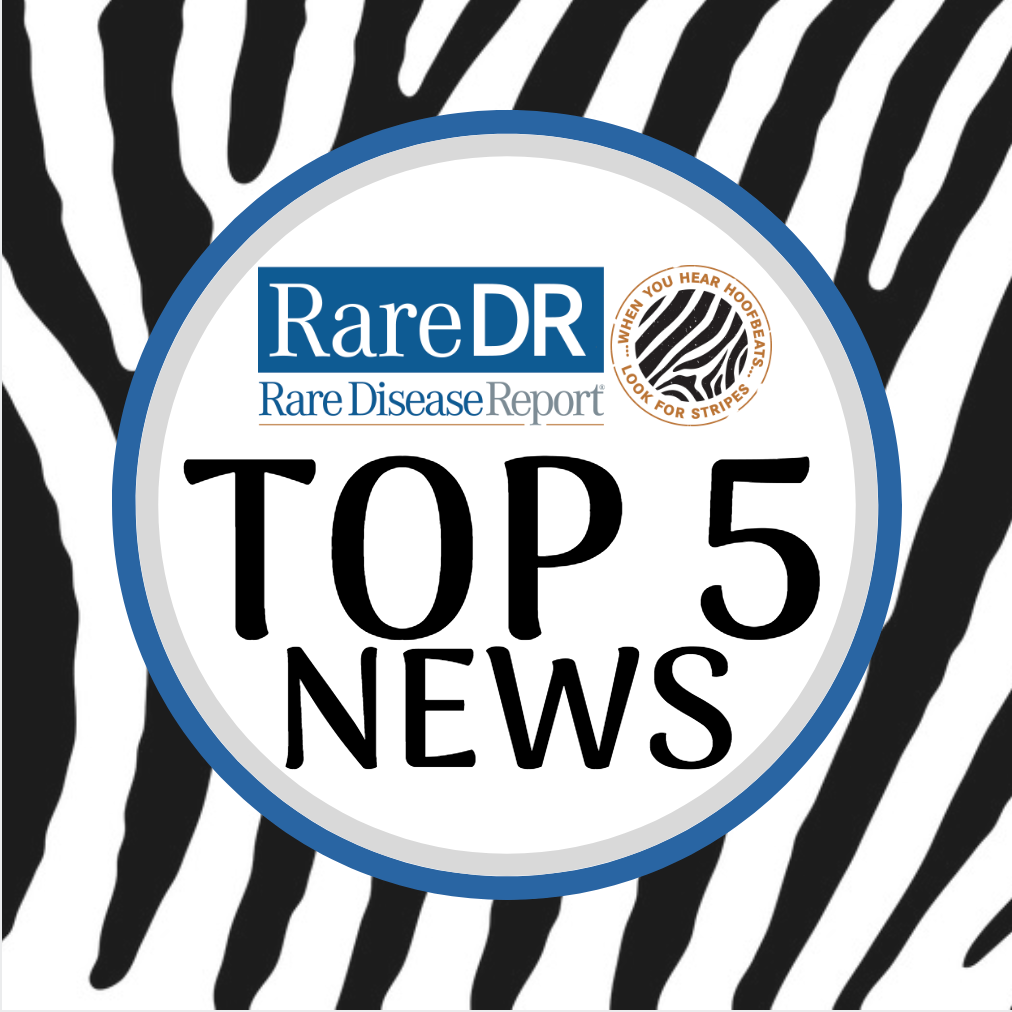Article
Top 5 Rare Disease News of the Week—September 16, 2018
Author(s):
Stay up-to-date on the latest rare disease news by reading the top 5 articles of the week.

#5: PROOF Registry Study Reaffirms Benefit of Using Pirfenidone to Treat IPF
There are only 2 antifibrotics currently available to treat patients with idiopathic pulmonary fibrosis (IPF), a progressive, deadly lung disease that is associated with a median survival time from diagnosis of 2 to 5 years: pirfenidone (Esbriet) and nintedanib.
Although clinical trials provide important safety and efficacy data associated with these treatments, restrictive inclusion and exclusion criteria can make it difficult to apply results to real-world populations of patients with the disease.
In an effort to provide data on longitudinal treatment outcomes in real-world populations, a team of investigators launched the PROOF registry, an observational study that has been ongoing since 2013 which has been dedicated to monitoring disease progression in patients with IPF.
#4: Study Discovers Link Between Butterfly Syndrome and Skin Cancer
Read more about pirfenidone treatment for IPF.An international team of investigators has made a discovery about the cause of autosomal recessive dystrophic epidermolysis bullosa (RDEB) that sheds light on how the disease leads to cancer in some patients and offers clues to potential new approaches to treatment.
Also known as butterfly syndrome, RDEB is a rare genetic condition affecting the skin, causing it to blister and easily form erosions from minor injuries such as scratching or rubbing. According to the National Institutes of Health (NIH), the overall estimated incidence of dystrophic epidermolysis bullosa in the United States is 6.5 per million newborns, with more severe autosomal recessive forms of the disease occurring in 1 per million newborns. In cases of the most severe form of the condition, Hallopeau-Siemens type RDEB (RDEB-HS), infants are often born with widespread skin blistering and erosion occurring during birth. Healing skin develops severe scarring, and, along with other complications, patients with the disease are at high risk for developing an aggressive form of squamous cell carcinoma (SCC) as young adults.
#3: Fingolimod Linked with Lower Relapse Rate in Pediatric Patients with Multiple Sclerosis
Read more about the link between butterfly syndrome and skin cancer.The only approved treatment for pediatric patients with multiple sclerosis aged 10 years through to adulthood, fingolimod (Gilenya) was linked with a lower rate of relapse and less accumulation of lesions on magnetic resonance imaging (MRI) over a 2-year period compared with interferon beta-1a in the phase 3 PARADIGMS trial.
However, a higher rate of serious adverse events was also associated with the treatment, underscoring the need for longer studies to assess the treatment’s safety and durability in pediatric patients with multiple sclerosis.
Results from the trial have recently been published in the New England Journal of Medicine (NEJM).
Tanuja Chitnis, MD, principal investigator of the study, stressed the challenges of treating this patient population to Rare Disease Report®. “These children and adolescents will have a higher relapse rate than the typical adult patients,” she said. “We and several other groups have shown there is a higher relapse rate in association with younger age. That is part of the challenge, and it shows the importance of having effective treatments in children.”
#2: Rare Pediatric Disease Designation Granted to Stargardt Disease Treatment, LBS-008
Read more about fingolimod in pediatric patients with multiple sclerosis.The US Food and Drug Administration (FDA) has granted a rare pediatric disease designation to Lin BioScience’s LBS-008 for the treatment of Stargardt disease, an untreatable, inherited condition that can result in permanent vision loss in children.
"We continue to be encouraged by the regulatory support for LBS-008 and the opportunities provided by the Rare Pediatric Disease designation and the Priority Review Voucher Program," stated Tom Lin, PhD, MBA, MMed, CEO of Lin Bioscience, in a recent statement.
LBS-008 is a first-in-class oral therapy that has been developed to inhibit the buildup of toxins in the eye that cause Stargardt Disease and atrophic age-related macular degeneration (dry AMD), which is a condition that damages the retina.
#1: New Urine Diagnostic Test Offers Inexpensive Way to Detect Onchocerciasis
Read more about LBS-008 for Stargardt disease.Onchocerciasis, also known as river blindness, may now be detectable through a urine diagnostic developed by investigators from the Scripps Research Institute. The test, a lateral flow immunoassay (LFIA) diagnostic, can detect the parasitic worms that cause the rare disease, possibly providing a diagnosis in real time.
"River blindness affects individuals both in Africa and Latin America, and because many of these endemic regions are difficult to access, what is needed in the field is an inexpensive point-of-care means to monitor the disease," Kim Janda, PhD, the Ely R. Callaway Jr. Professor of Chemistry and member of the Skaggs Institute for Chemical Biology at Scripps Research, said in a recent statement.
Monitoring and evaluation are key when it comes to current elimination efforts for onchocerciasis—interruption of disease transmission indicates that efforts are working.
Currently, a “skin snip” biopsy is the current gold standard for detecting the parasitic worms; however, they are usually insensitive indicators of infection; as the density of microfilaria in the skin decreases, the sensitivity of the skin snip decreases. Other available tests are unable to distinguish between past and current infections.
The assay uses designer antibodies that are able to detect a unique biomarker—N-acetyl-tyramine-O-glucuronide (NATOG)—which only appears when a human host has metabolized tyramine—a worm neurotransmitter. Humans secret this biomarker in their urine. If a test comes back without any lines, the individual has the parasite; a negative test will show a colored line.
The discovery of NATOG as a biomarker for onchocerciasis was previously reported in human urine samples. NATOG bypasses the limitations of antibody biomarkers and PCR methodologies with its ability to distinguish between active and past infections.
In the recent study conducted by the research team, the NATOG-based urine LFIA for onchocerciasis accurately identified 85% of analyzed patient samples (N = 27).
Read more about the new urine diagnostic test for onchocerciasis.




